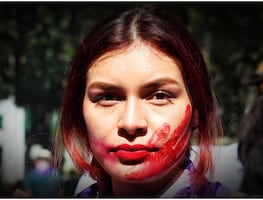Más Información

Trabajadores del Poder Judicial denuncian violación a derechos por recorte presupuestal; analizan paro de labores

¡Ay nanita! 2025 alcanza récord por frío al llegar a -23°; temperatura mínima registrada desde hace 10 años

Por violencia o migración, INE perfila zonas de atención para elección judicial; falta determinar total de casillas

Buscadoras, activistas y periodistas piden reunión con Sheinbaum; denuncian desplazamiento y hasta feminicidio por su labor
Beaches in Veracruz are integrating drones that monitor and classify waste and scraps, allowing a better recycle system informed today the National Council of Science and Technology ( Consejo Nacional de Ciencia y Tecnología or CONACYT ).
The identification of polyethylene terephthalate ( PET ) waste in the beaches of Veracruz is a student project by the University of Veracruz Micro and Nanotechnology Research Center ( MICRONA ) and the Technological Institute of Boca del Río .
Drones are remote operated air crafts that according to the Secretariat of Communications and Transportation ( Secretaría de Comunicaciones y Transportes ) are allowed to over fly national territory with a maximum height of 122 meters ( 400 foot ).
Waste identification is executed by Matlab analysis software , using pictures previously taken by drones.
Another possible activity for the drones, not implemented yet, is to obtain an exact measurement of the carbon dioxide present in the beaches.
This system is being used on the beaches of Veracruz, Boca del Río , and Antón Lizardo .
In Mexico, 772 tons of plastic waste is produced annually, corresponding to 10.9% of the total annual waste.
According to the Ministry of Environment and Natural Resources ( Secretaría de Medio Ambiente y Recursos Naturales ), 90% of the trash floating in the sea is plastic material of various types.
sg






